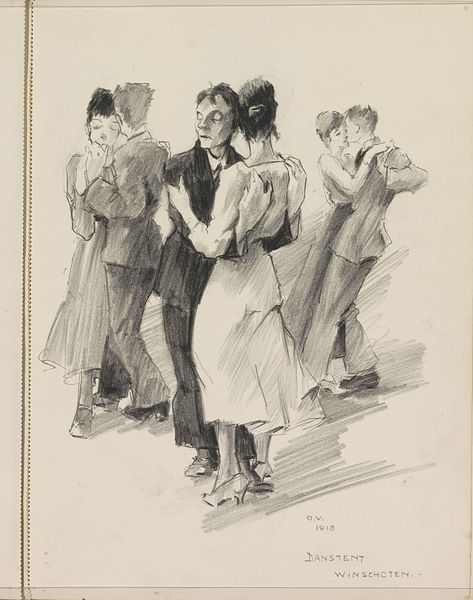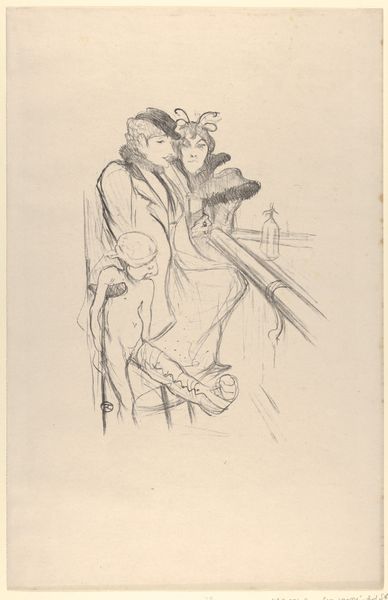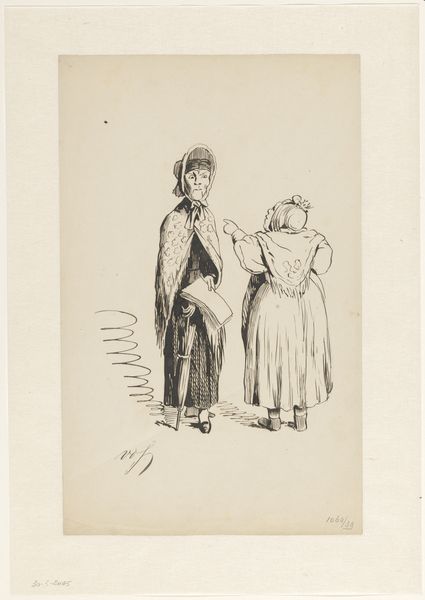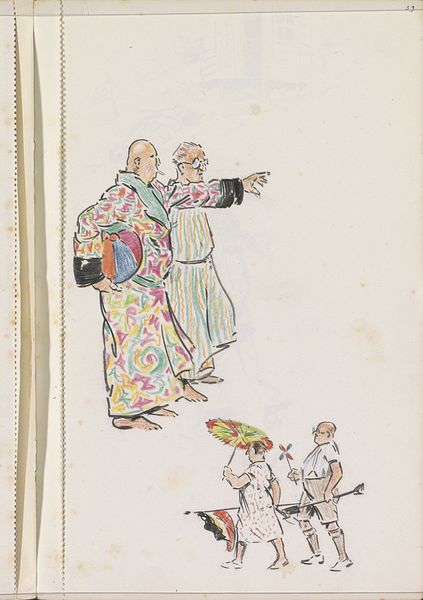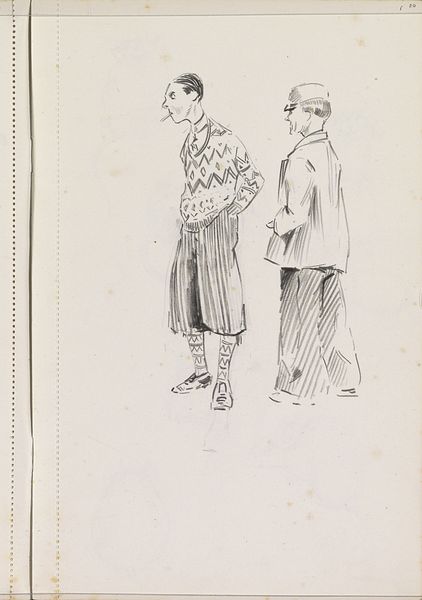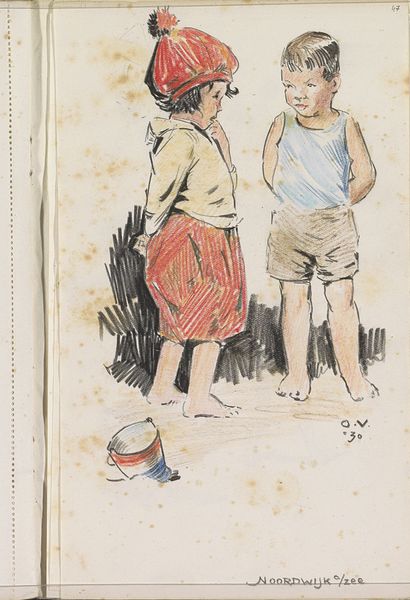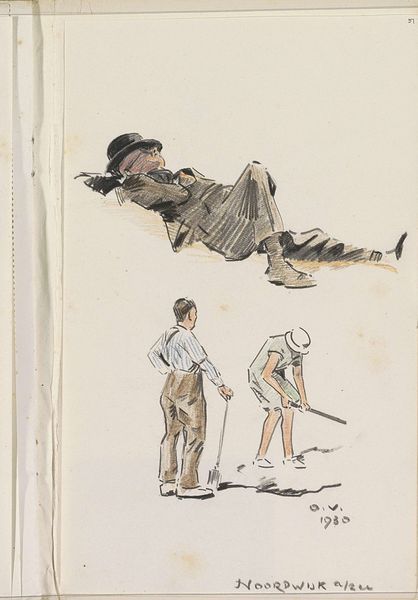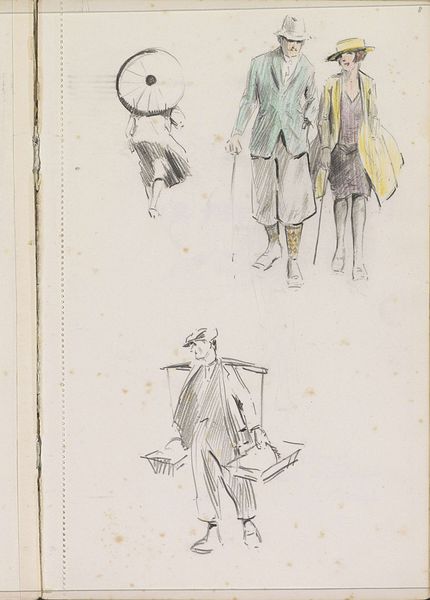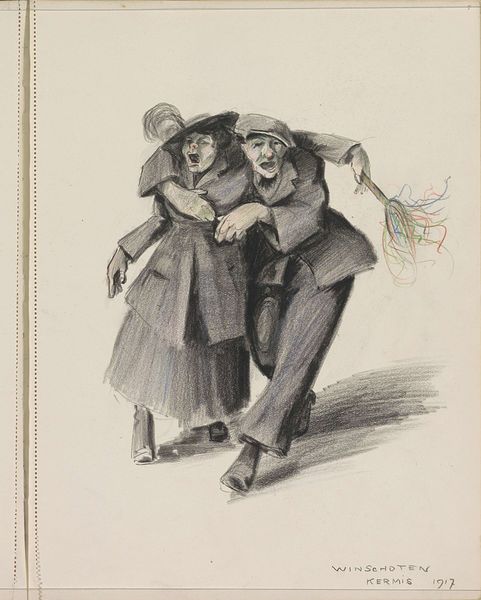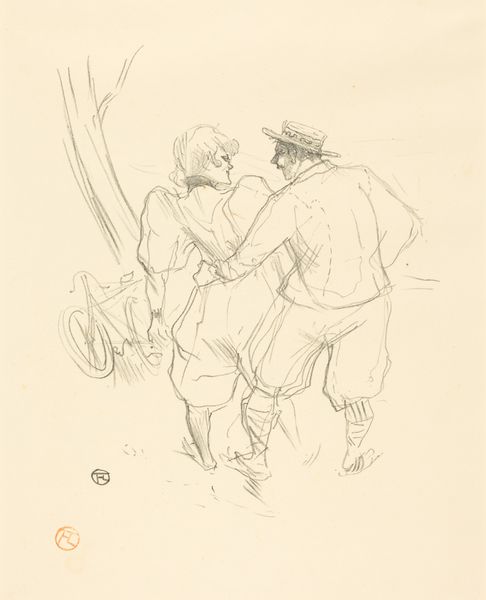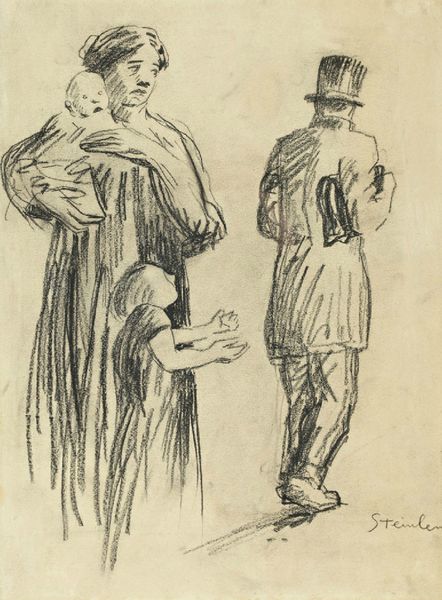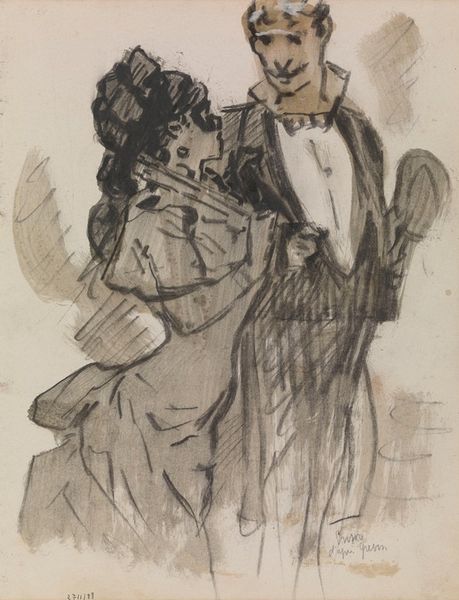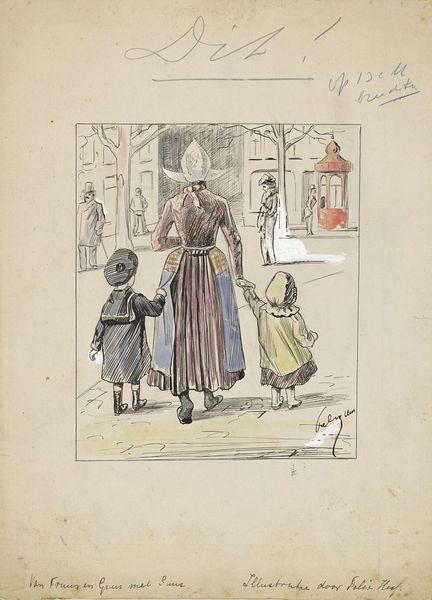
drawing, coloured-pencil, watercolor
#
portrait
#
drawing
#
imaginative character sketch
#
toned paper
#
coloured-pencil
#
quirky sketch
#
sketch book
#
figuration
#
personal sketchbook
#
watercolor
#
intimism
#
sketchbook drawing
#
watercolour illustration
#
storyboard and sketchbook work
#
sketchbook art
#
watercolor
Copyright: Rijks Museum: Open Domain
Curator: This piece is entitled "Twee rokende figuren", or "Two Smoking Figures," made around 1930 by Otto Verhagen. Editor: Well, it strikes me immediately as something dashed off, capturing a fleeting moment with almost whimsical energy. The colors, especially on the figure on the left, have a playful quality. Curator: I agree; there's a real sense of spontaneity. It’s most likely from a sketchbook, as you can see that the support is toned paper, and it appears to incorporate colored pencil and watercolor. These types of works, in that period, functioned as private explorations that didn't necessarily align with what might have been exhibited publicly. Editor: Right, this piece feels quite intimate. The materials themselves contribute to this sense—watercolor, colored pencil. There’s an immediate accessibility to those materials; there's no need for elaborate equipment or studio setup, pointing to how casually this came together. It blurs any potential boundary between high art and sketching as practice. Curator: Exactly, and in that respect, its presence complicates traditional views of portraiture from that era, when commissioned portraits of societal figures were preferred over simple watercolor explorations of form. I imagine these types of sketches had tremendous significance during moments of heightened global socio-political tension—to have art making as respite. Editor: Yes, and speaking of respite, there's something about the fashion of these figures—a patterned textile for one figure's vest or shawl. The forms suggest movement. We see that in the line, in the medium itself, and there’s a social component, as people create these markers through their visual and material culture. They make identity visible. Curator: Agreed. It really makes you wonder about the figures’ background. The setting, too—the inscription at the bottom reads "Noordwijk zee"—suggests a location near the sea, maybe where society’s elite would vacation and encounter diverse characters. Editor: Right. The accessibility of the materials makes this more egalitarian than formal oil portraiture of the time. Curator: True. It's a fantastic record of the materials and social dimensions of early 20th century culture. Editor: Yes. And that peek into everyday life – almost unremarkable – is the very thing that makes it stand out to me now.
Comments
No comments
Be the first to comment and join the conversation on the ultimate creative platform.
